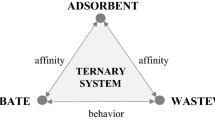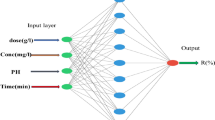Abstract
THE development of the various forms of gas chromatography has resulted in a search for more selective stationary phases and adsorbents. In partition chromatography there appears to be a limit to the selectivity which can be obtained with solution forces, for as yet no stationary phase has been found which will separate close-boiling isomers such as meta- and para-xylenes. As it is to be expected that surface forces would show more selectivity, adsorption chromatography appears the most promising technique for these difficult separations. In this respect the recent work of Janak1, in which he uses xeolite as an adsorbent, is interesting. This mineral has a three-dimensional lattice with replaceable cations, and a certain amount of variation in the separation characteristics may be achieved by replacing the naturally occurring sodium ions by silver or manganous ions.
Similar content being viewed by others
References
Janak, J., “Vapour Phase Chromatography on Zeolites”, Symposium on Vapour Phase Chromatography, London (May 1956).
Grim, R. E., “Clay Mineralogy”, 250 (McGraw-Hill, 1953).
Barrer, R. M., and MacLeod, D. M., Trans. Farad. Soc., 51, Pt. 9, 1290 (Sept. 1955).
Author information
Authors and Affiliations
Rights and permissions
About this article
Cite this article
WHITE, D. Use of Organic-Montmorillonite Compounds in Gas Chromatography. Nature 179, 1075–1076 (1957). https://doi.org/10.1038/1791075b0
Issue Date:
DOI: https://doi.org/10.1038/1791075b0
- Springer Nature Limited
This article is cited by
-
Analysis of isomeric cresols by gas chromatography
Chromatographia (1991)
-
Evaluation of new organoclay stationary phases for the separation of ethylbenzene and xylene isomers
Chromatographia (1991)
-
Gas-chromatographic analysis of free dichlorophenol isomers on modified Bentone 34
Fresenius' Zeitschrift für analytische Chemie (1982)
-
Chemically bonded stationary phases for gas and high performance liquid chromatography
Chromatographia (1976)
-
Liquid-solid chromatography on bentone-34
Chromatographia (1972)





